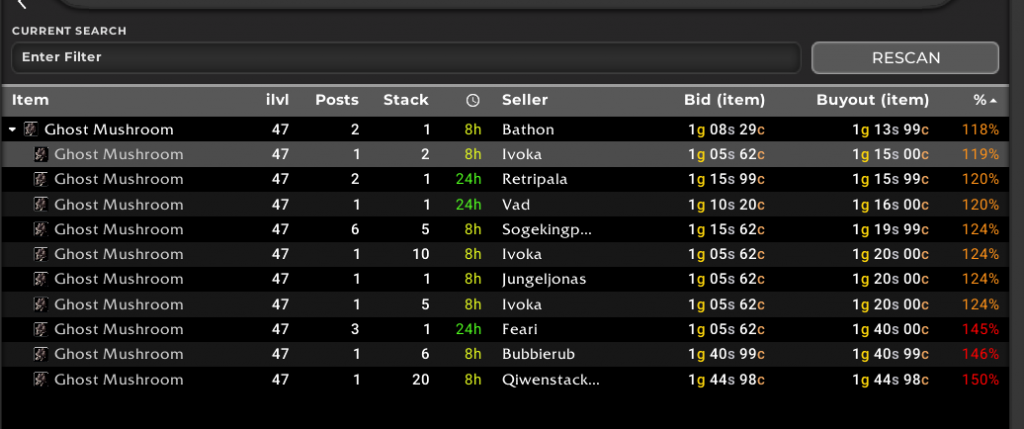I buy all my materials from the AH and I rely on TradeSkillMaster to calculate the correct crafting costs to ensure I sell my items for a profit. I like to keep it simple as we will see.
TSM crafting cost basics
TSM will calculate the crafting cost in the value source crafting. The default value for materials is either the crafting cost, the buy price from vendors or the market value of the item. For the vast majority of items the market value will be the relevant one as I buy everything from the AH (except vendor mats).
For vendor materials the value will always be correct of course, and for crafted gear it will once again use dbmarket for any materials needed, so dbmarket is the most important value to understand when it comes to materials.
An example
Let’s take a hypothetical example. A random item requires 5 of material A to craft. If the market value of A is 10 gold then the crafting source for the item will be 50 gold. 120% crafting, which is my minimum price will be 60 gold. As long as we buy material A for 10 gold or less we will get at least 20% profit.
Crafting operations or not?
In classic I do not use crafting operations at the moment. The main reason is that my capital has been so limited that I want to keep flexible. I also experiment a lot and I haven’t found optimal restock amounts for anything.
Crafting operations can speed up both restocking and crafting as you can get away with less thinking, but it’s not necessary.
How do I decide on crafting?
I let my material buying control my crafting. I will buy materials for the crafts I sell until the materials start stacking up in my inventory. Then I craft using all the materials I have. This just lets me focus on running shopping scans and then crafting a batch with everything I can to save time.
Buying materials
As we covered earlier you want to buy materials at a maximum price of dbmarket. Personally I just use the same shopping operations I do for flipping. They have a max price of 80% dbmarket, which means that 100% market value will show up as 125%. You can then just buy up to 125% for materials you craft with using the same operation. This also means you can swap between crafting and flipping as you want.

Keep it simple
As you can see I keep it fairly simple. This let’s me focus more on just running scans and testing markets rather than trying to fine tune my buying and selling. It’s been working well so far for me, so hopefully this helps you out a bit.

Intresting. Do you stock up on every type of herb below 80% of do you rather by herbs you know are used for certain crafts?
Also when looking at the profit do you then use avgBuy on material cost or keep it at market value?
I only buy herbs I plan on using to craft, so only for the specific crafts I’ve had success selling.
For the material value I keep it at the default. I prefer to have the value move with the market rather than with my purchases. It’s also strictly speaking better to value your materials at their opportunity cost value (what you could sell them for) than what you paid if you want to be optimal. If you can’t make profit at dbmarket you are probably better off just flipping from 80->100 rather than trying to buy at 80 to get profitable crafts.